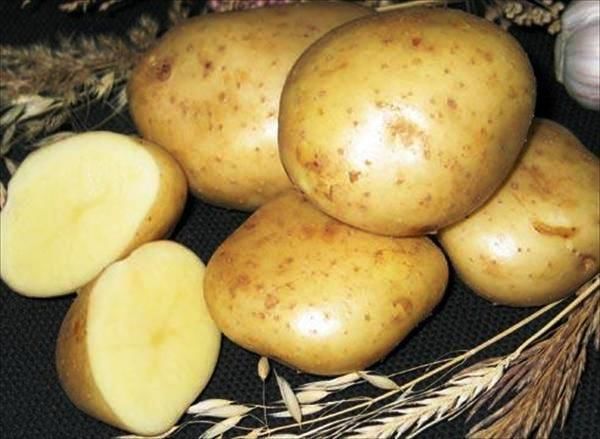
Potato Lorch does not need special recommendations, since it is the most deserved, widespread and long-lasting variety in the country, grown by the Penza All-Russian Research Institute of Potato Farm A. G. Lorch. It was listed in the State Register as early as 1931. The variety description and its excellent characteristics are known not only to experienced but also to novice plant growers.
For his taste, he has long been loved not only by domestic consumers, he is known far beyond the borders of the Russian Federation. It does not require any special growing rules, the main thing is good seed material and following the conditions prescribed for potatoes. Instead, you always get good yields (this is evidenced by many years of favorable reviews), and excellent tubers, white in section, not darkening when cleaning and boiling, friable, suitable for any culinary needs.
Content
Description and characteristics of the variety
As the variety description shows, Lorch potatoes are not without certain drawbacks: they are susceptible to scab and cancer, require good watering during the growing season and do not like heat. However, all this is more than redeemed by resistance to viruses, fungi and late blight. The variety is high in vitamin C and protein. Characterization also includes the mention that this is one of the main varieties used for the production of starch. Observing the basic rules of cultivation, you can get up to 35 tons from 1 ha, and this despite the fact that A.G. Lorch bred it back in 1922. After 4 years, the variety will celebrate its centenary. The yield of a commercial product invariably ranges from 88 to 92%, as evidenced by the reviews of domestic plant growers who still use a proven variety for cultivation on an industrial scale.
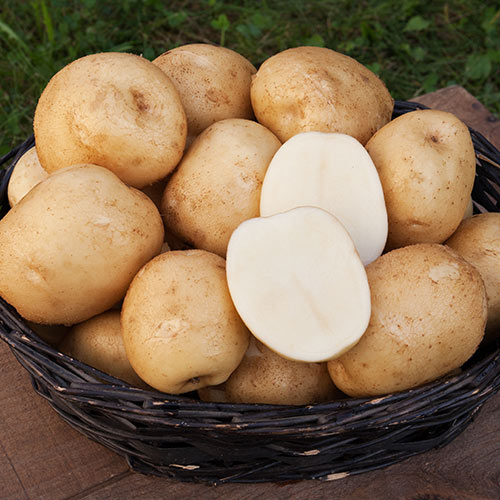
The Lorch potato variety makes it possible to obtain from 25-35 tons from 1 ha. Such a collapse in performance depends on compliance with the conditions necessary for growth. The presence of all components (lack of heat, good watering during the formation of buds and flowers, professional bait, hilling, cultivation and quality seed material, suitably prepared) makes it possible to increase the yield of the variety by 25-30%. Without proper care, the variety has an average yield, and without treatment from pests, it can undergo scab and cancer. Potato Lorch can decorate any field: a relatively high bush grows intensely green in color, and flowering occurs in red-violet flowers.
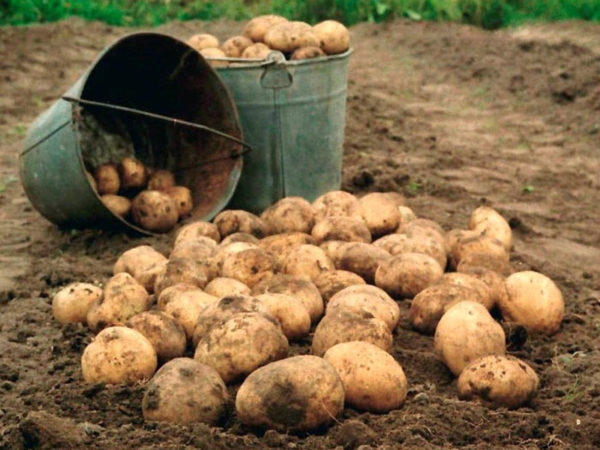
Preferred growing regions:
- Central;
- Central Black Earth;
- Northwestern;
- North Caucasian;
- Middle and Lower Volga;
- Ural.
Tubers, depending on the growing region, reach, on average, from 90 to 150 g, the skin of the fruit is thin, the eyes are shallow. If growth has not occurred due to improper conditions or improper care, they are yellowish-brown in color, even, light green at the junction of the peel and potatoes, not darkening, despite the abundance of starch, neither during cleaning nor during cooking.
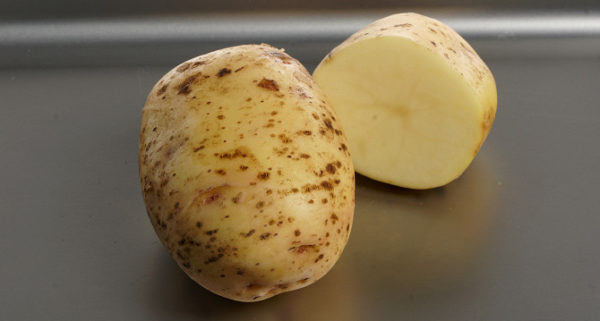
Advantages and disadvantages of a proven variety
Long-term practice of growing and demand for seed material suggests that a variety with almost a hundred-year-old reputation has many more advantages than disadvantages. When it comes to advising a beginner breeder so that he does not get confused in varietal abundance, Lorch potatoes are always remembered, with its smooth and heavy tubers, excellent keeping quality and incomparable taste.
In favor of the Penza variety, bred by domestic breeders, of high quality and widespread, many arguments can be listed:
- relatively tall bush, resistant to cool temperatures;
- ability to resist diseases (late blight, rust);
- excellent immunity to fungi and viruses (bacteriosis);
- attractive appearance;
- full-bodied large tubers;
- suitability for any culinary needs;
- significant protein and vitamin C;
- a high percentage of starch, making it in demand in the industrial and food industries;
- keeping quality and ability to tolerate transportation;
- proven long-standing reputation;
- domestic breeding product focused on specific, but variable climatic conditions;
- high productivity (25-35 tons per hectare);
- optimal yield of a commercial product (88-92%).
For a small site, which the owner is constantly engaged in, the Lorch variety is a potato, which can become a crop with a much greater commercial return. To do this, it is enough to provide him with the necessary conditions. The characteristics of the variety indicate its high potential, which is able to overcome these shortcomings. Fertilizer applied in time will prevent potato tubers from acquiring an irregular shape, and timely preventive measures will protect against those few diseases for which he is not immunized by selection.
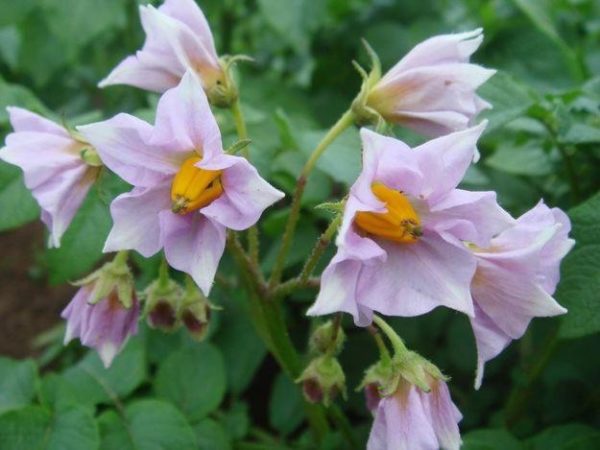
Landing and basic care
As evidenced by the description of the variety, it is better to plant Lorch potatoes in soil prepared from the fall. To do this, they dig it on a bayonet with a shovel, and cover it with chopped plants, straw, make manure or humus. Autumn preparation will give optimal results if you plant potatoes not in the same place, but in areas where legumes, annual or perennial herbs, lupins, flax, or winter crops were grown. The zealous owner knows how the change of planting location affects the yield of the variety.
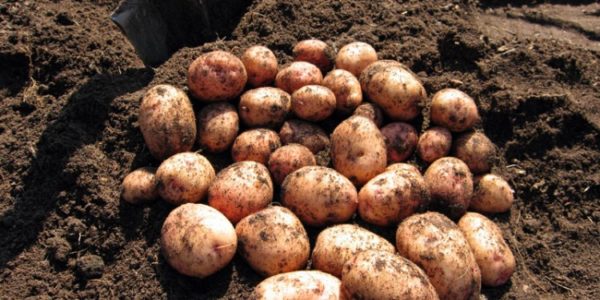
The site should be located on a relative elevation (otherwise the tubers will rot). At the same time, they will be well lit, especially during the growing season, when intense photosynthesis takes place for the formation and development of potato fruits. Soil and planting material is pre-treated using folk or purchased products to prevent the development of diseases.
For planting, only healthy and complete seed material is used (photo). Optimal for planting is considered the end of April, beginning-mid-May (depending on the climatic conditions of the region). In a small garden, potatoes can be planted in place of pumpkins, cucumbers or tomatoes.
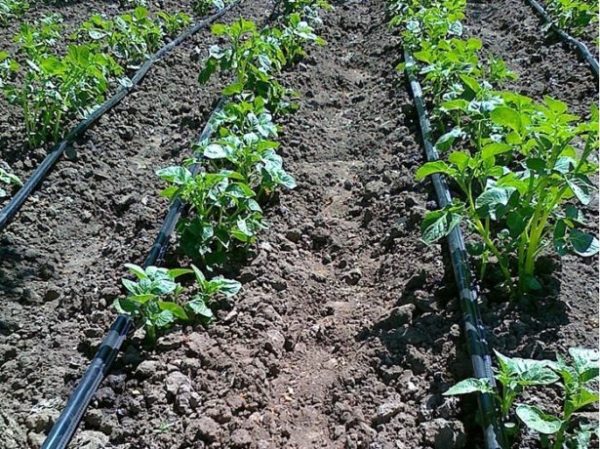
Potato Lorch, according to the description of the variety and numerous reviews, is planted in 3 ways:
- hole, in the pits at a distance of 40 cm, with a row spacing of 70 cm, sprinkling the landing site and falling asleep with top soil;
- trench (for dry soil), in a 30-cm trench pre-dug in the fall, with straw laid there, which is left before planting as additional fertilizer;
- ridge - for wet soil, on ridges about 20 cm high, which are specially built on the upper soil layer.
Nitrogen fertilizers can be used for top dressing, however, the creator of the variety was convinced that chemicals worsen the taste of potatoes. Therefore, organics are traditionally used for top dressing of this variety - manure, compost, chopped grass or straw left in the field from autumn, and ash when planted in holes.
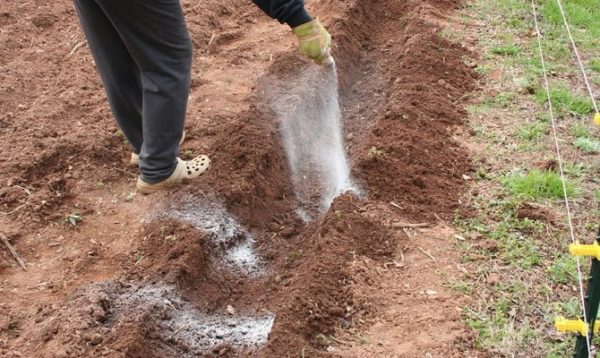
Hilling in the hole method is carried out classically - twice. The need for additional hilling is rare, since the bushes of the cultivar are 80 cm wide, sprawling and strong. Watering is recommended when buds and flowers are formed, but in case of heat it is better to let moisture in between rows, because Lorch is sensitive to the lack of necessary water. After 115-120 days, you can make a trial digging to assess the degree of maturity of the potato and the onset of the harvest period.
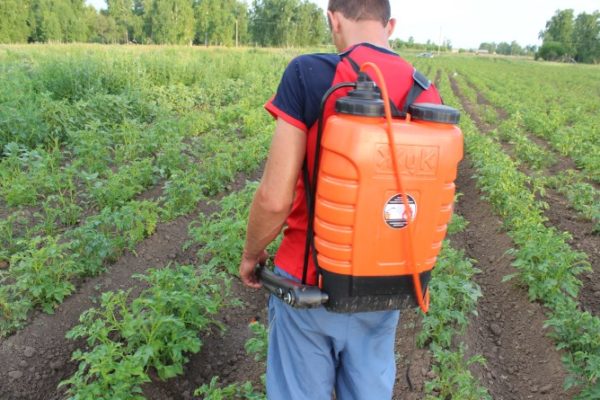
Harvesting and storage of crops
Potatoes need to be harvested before the onset of the first frost. If you do this on a dry and sunny day, you can significantly increase its storage time even in a simple, dark and dry cellar, not to mention specialized warehouses in which suitable conditions are created industrially.
A potato variety with a proven track record of almost a century does not need additional advertising and is still used stably in private and industrial plantings.




 Description and description of varieties in Belarus with a photo
Description and description of varieties in Belarus with a photo Do I need to pick flowers from potatoes: why do they do it
Do I need to pick flowers from potatoes: why do they do it When to dig potatoes: timing and availability of new potatoes
When to dig potatoes: timing and availability of new potatoes How to grow a good potato crop: various methods and methods, planting and care
How to grow a good potato crop: various methods and methods, planting and care